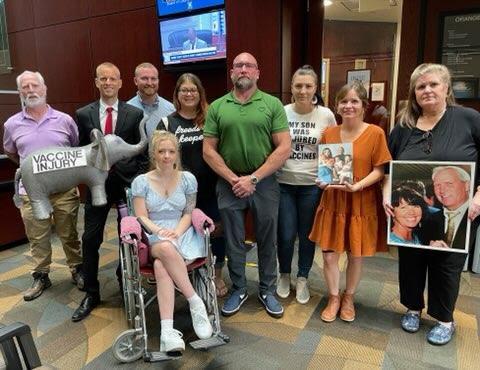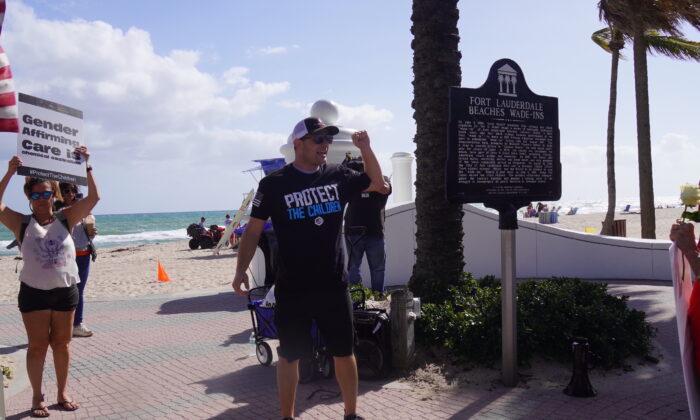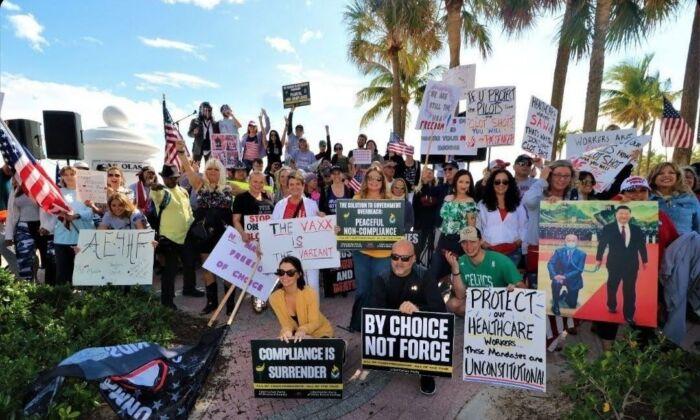Fort Lauderdale, Florida–For more than 70 years, a group of wild monkeys has been thriving in a thick mangrove forest near one of the busiest airports in the state of Florida.
In the late 1940s, about a dozen vervet monkeys made a “jailbreak” from their cages at a local chimp farm and escaped into the wilds of Dania Beach. The farm, originally called the Anthropoid Ape Research Foundation (AARF), was owned and operated by Leila Roosevelt and Armand Dennis, and served as both a zoo and a research facility. The research facility housed primates imported from Africa that served as subjects in the development of the polio vaccine, tuberculosis, and other diseases. It was sold in 1951 and made into a roadside primate attraction, then sold again in the 1970s to Florida Power and Light.
A published study reported that a few Chlorocebus sabaeus (green monkeys) were “smart enough” to “jimmy the latch” of their cages on a farm and escape into the mangrove forests, where they adapted, thrived and pro-created for many years. DNA testing identified the green monkeys as having West African origins.

With the overhead roar of jet engines from Fort Lauderdale-Hollywood International Airport, Dr. Missy Williams took The Epoch Times into the thick mangroves and through black muck to observe the monkeys in the environment they’ve inhabited for decades. Whether by coincidence or natural evolution, the monkeys blend in with the environment, making it hard for any predator to see them, Williams said.
“The threats to these monkeys are not environmental,” she explained. “The threats come from urban impacts such as getting run over by a car, and sometimes electrocution.”
She recalled how one monkey dubbed “Mystery Man” was electrocuted. “Males like to go to the highest point of their territory to survey the area to make sure that their social groups are free from danger,” she said. “Mystery Man died while climbing to the top of a power pole to make sure his family’s territory was safe. He was killed instantly when he touched a live wire.”
Still, humans remain their biggest threat, according to Williams.
“I would say humans are their biggest predator, of course. Because the exotic pet trade here in Florida is a big thing, people sometimes try to take them as pets,” said Williams.
She began studying the free-ranging monkeys seven years ago, she said, and since then five of the monkeys have “simply disappeared.” Her research showed that some had been “trapped” and she suspects that they have either been kept for pets or enlisted into the entertainment industry.
“Primates are not pets,” Williams warned. “They do not do well in captivity at all. They are best to be out free—they learn how to be monkeys from other monkeys.”
Unfortunately for the primates, which are not native to the state landscape, Florida Fish and Wildlife does not recognize them as a protected species. If captured or found harmed and turned in to veterinarians or FWC, they are often euthanized because FWC does not allow them to be reintroduced into the wild.
“It is against Florida law to trap or hurt the monkeys,” she said. “But beyond that, they don’t have protection under Florida law because they are classified as non-native.”

Williams has documented four social groups of monkeys, with one group having as many as 16 members. There are a total of 36 monkeys that have been counted in their census.
She said four social groups are “distributed throughout the mangroves,” and each group composition has males and females. The females in each group are related because the females “never leave.” However, at age 5, the males are “kicked out of the nest” to join another group. Once the male joins the group, he will stay around three years and leave in search of another group to join. But being in South Florida the “choices are limited.”
Williams has installed trail cameras around the area so she can “keep an eye on them” and often will “wake up in the middle of the night” because she worries about them, she said.
“We want to build the enclosure and jump through all the bureaucratic hoops to get vets in here to sterilize the monkeys so they can just live out their natural lifespan and die out,” she said. “I felt it was my responsibility to help out with them—I just couldn’t walk away knowing that if a monkey gets hurt, the animal is going to suffer.”
The project has leased 3.6 acres of land situated between Fort Lauderdale Airport and a parking lot for airport patrons. It is Williams’ plan to have it enclosed with overhead walkways in the forest so that the social groups of monkeys can travel throughout the area. Williams estimates the lifespan of these monkeys at anywhere from 20 to 25 years.
“That’s my dream—to have various sizes of enclosures on the 3.6 acres, all connected with aerial walkways so they can have their own space to spread out as they need to,” she said. “So, they have plenty of room to get away from other monkeys (not in their colony) and take a break from all the social activity.”

She said the project will also serve to give college students academic credit for “interacting with them.”
The monkeys have learned to associate people with food, Williams said, and they will go out and forage in the parking lot instead of finding natural foods in the mangrove forest.
“They’re omnivores. They eat tree bark, ants, spiders, and certain plants, depending on the time of year,” she said. “However, people do feed them and, like humans, they do not make the right choices in their diet, which could lead to health problems.”
“We are a group that believes in compassionate conservations,” Williams said of the group. “Compassionate conservation is an innovative framework that helps reshape our current conservation and management practices.”
Williams received her doctorate in Integrative Biology from Florida Atlantic University, and wrote her dissertation on the vervet monkeys at Dania Beach.




